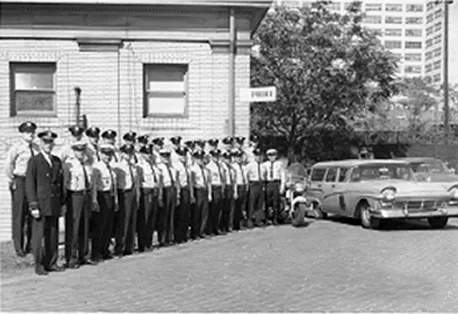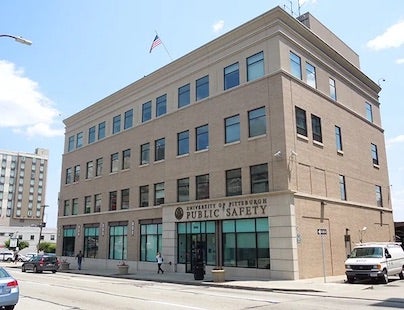Mission
The primary mission of the University of Pittsburgh Police Department is for the protection and welfare of all University students, staff, faculty, visitors, and guests to the University as well as the safeguarding of all property. In fulfilling this mission, our Department shall perform the necessary law enforcement functions within our jurisdiction and assist in a diverse range of services to the University community while practicing our core values of integrity, respect, service, and fairness.
History
Since its inception, the University of Pittsburgh Police Department has steadily progressed into a state-of-the-art law enforcement agency. With the constant support of the university community, the department has utilized educational and training opportunities to become a respected part of the community.
In the mid-1950s, the Oakland section of Pittsburgh, home to Pitt’s campus, experienced the same problems as any other inner city neighborhood throughout the country. Vandalism, theft, and parking problems became concerns for the University, and so, the Pitt Security Department was created. This small group of individuals became the foundation for what is now the University of Pittsburgh Police Department.
 In the 1960s, the department dealt with unrest and other civil problems that plagued the country at the time. University of Pittsburgh Police Officers were often on the front lines of the conflicts and learned to deal with the students with fairness and authority. By the late 1960s, Pitt became a state-related institution. In turn, University Officers were awarded the same powers and duties as Pennsylvania Capitol and Commonwealth Property Police.
In the 1960s, the department dealt with unrest and other civil problems that plagued the country at the time. University of Pittsburgh Police Officers were often on the front lines of the conflicts and learned to deal with the students with fairness and authority. By the late 1960s, Pitt became a state-related institution. In turn, University Officers were awarded the same powers and duties as Pennsylvania Capitol and Commonwealth Property Police.
In the early 1970s, the department was restructured and grew in number. Pitt's Department of Public Safety became the third-largest police organization in Allegheny County. In 1974, the first acting Chief took office in the newly-named University of Pittsburgh Police Department. Modernization was a priority as computers and state-of- the-art security systems became an integral part of police work.
Through the 1980s, the department continued to grow in terms of officers and equipment. The department reversed its recent name change and went back to calling itself the Department of Public Safety. University officers teamed up with officers from the City of Pittsburgh Police Department on an impact detail, where highly-visible foot patrol officers protected the campus community.
In the 1990s, the agency went back to being called the University of Pittsburgh Police Department. The department was on the cutting edge of police work and patrol functions during this time. By early 1995, bicycle patrol officers hit the streets, followed by motorcycle units in April 1997.
Perhaps the biggest change of the decade was the introduction of officer standards through the Municipal Police Officers Training Act (ACT 120). Now, the University requires its officers to attend accredited Police Academies meeting the same standards as all Pennsylvania Municipal Police Departments.
 On April 9, 2007, the University held a ribbon-cutting ceremony to officially open the new Public Safety Building. The building reflects Pitt’s safety commitment to students, faculty, staff, the Oakland business community, and neighbors that surround the campus. The building brings safety operations together in one location, thus providing increased public accessibility and visibility of police and safety officials.
On April 9, 2007, the University held a ribbon-cutting ceremony to officially open the new Public Safety Building. The building reflects Pitt’s safety commitment to students, faculty, staff, the Oakland business community, and neighbors that surround the campus. The building brings safety operations together in one location, thus providing increased public accessibility and visibility of police and safety officials.
The Public Safety Building houses a communications room equipped with cutting-edge technologies. These recent renovations have streamlined the process of receiving service requests and delivering assistance as efficiently as possible.
The building also has an emergency generator that powers campus safety systems such as digital video surveillance, the building access system, and emergency dispatch operations connecting to the University data and telephone networks. The building’s phone system can operate independently, allowing it to remain online as the key contact center for the University in an emergency situation.
